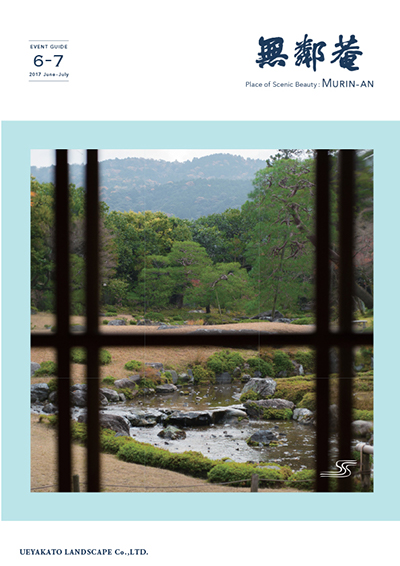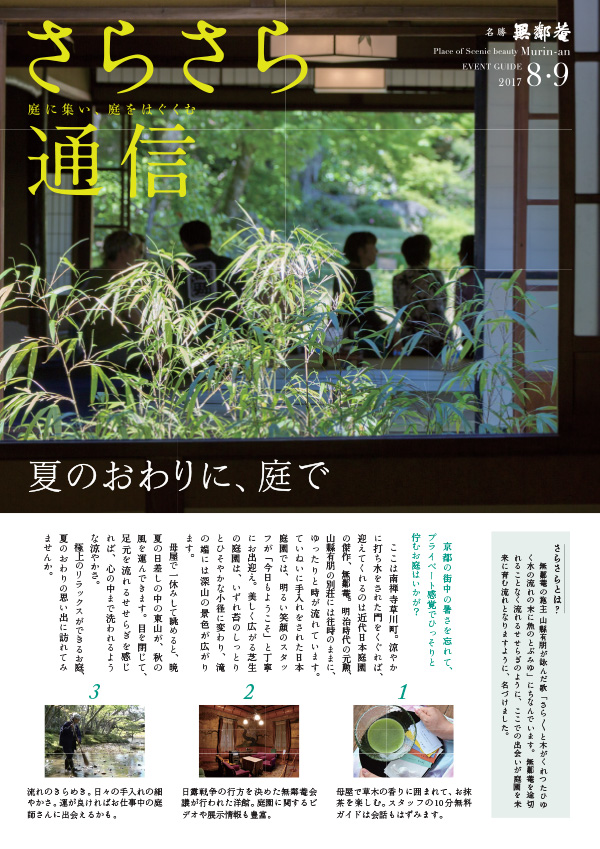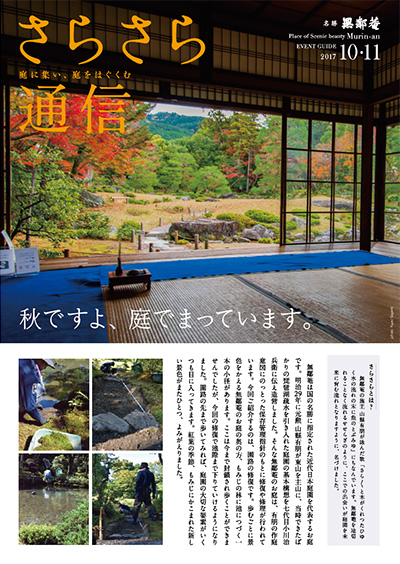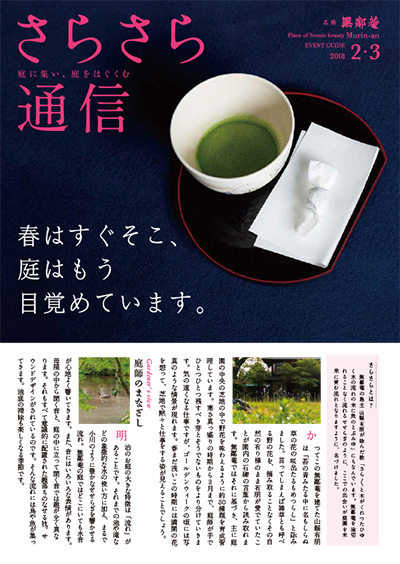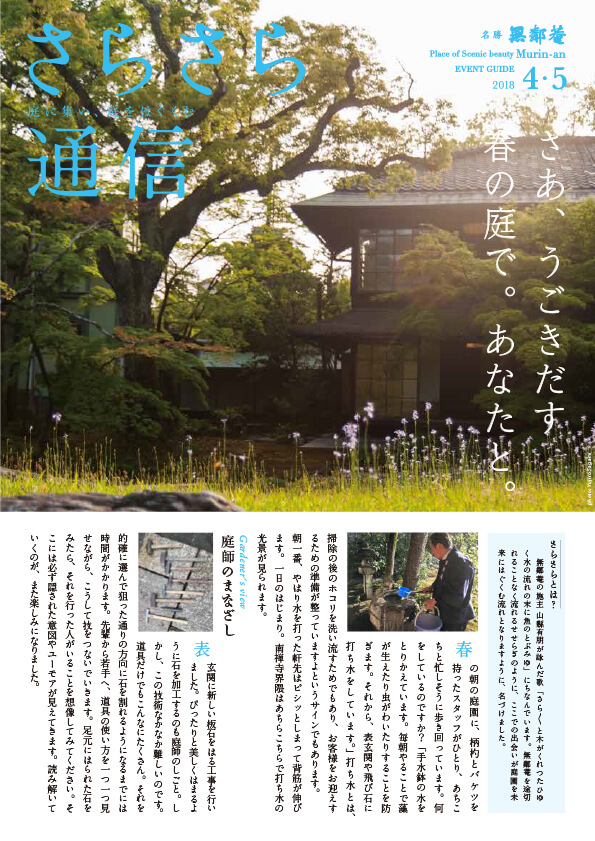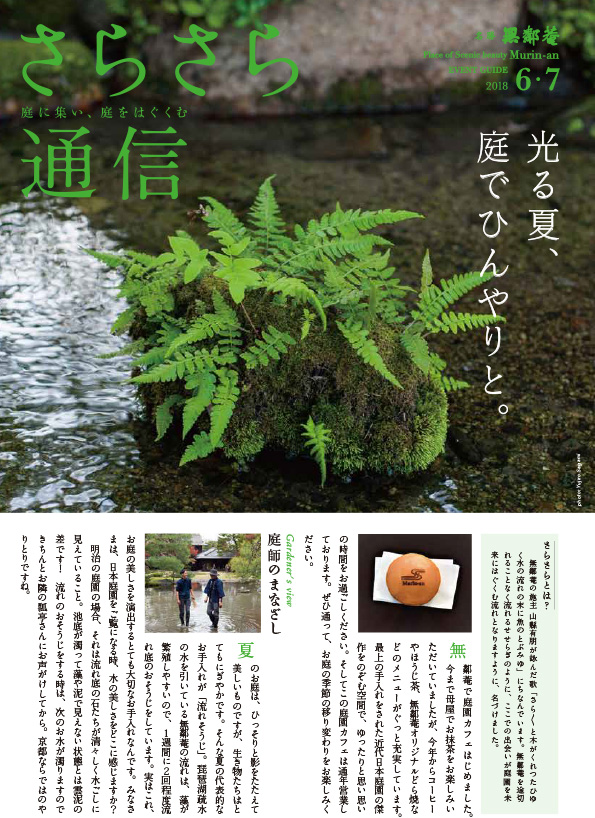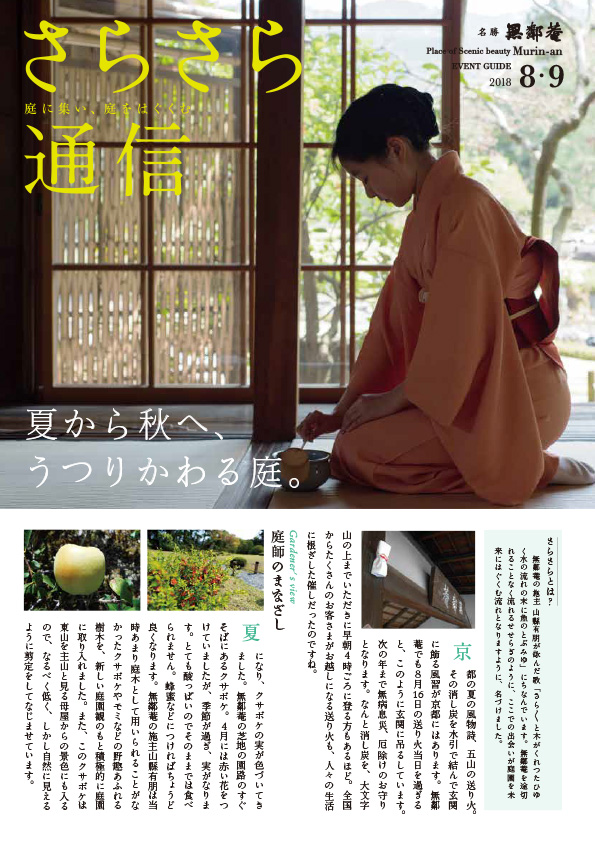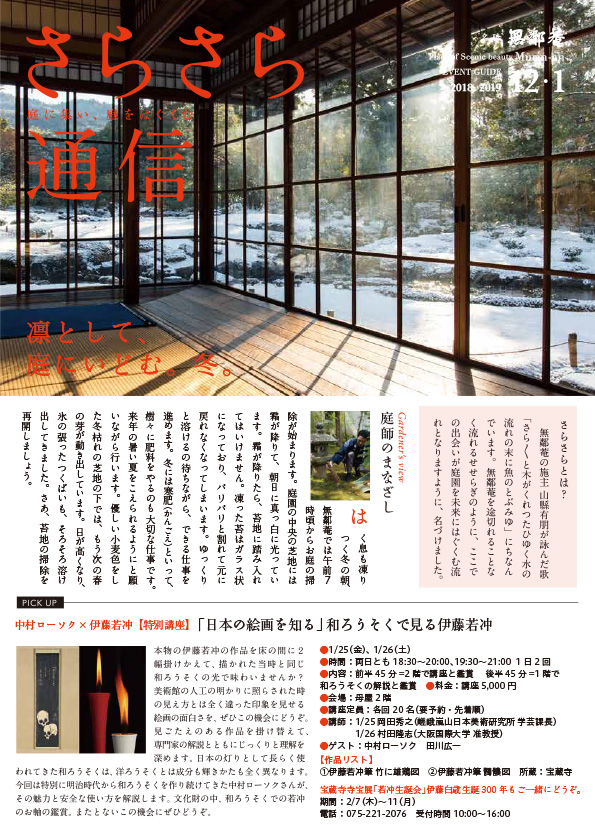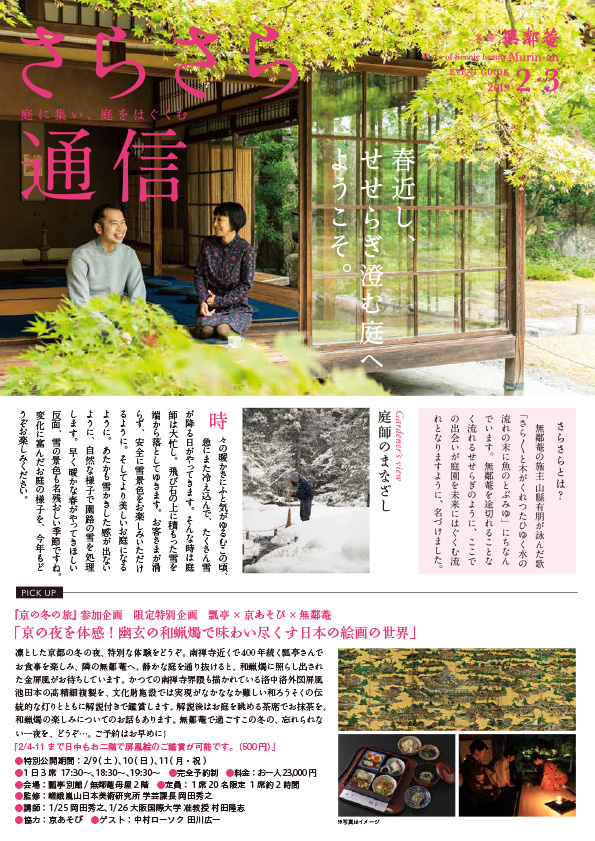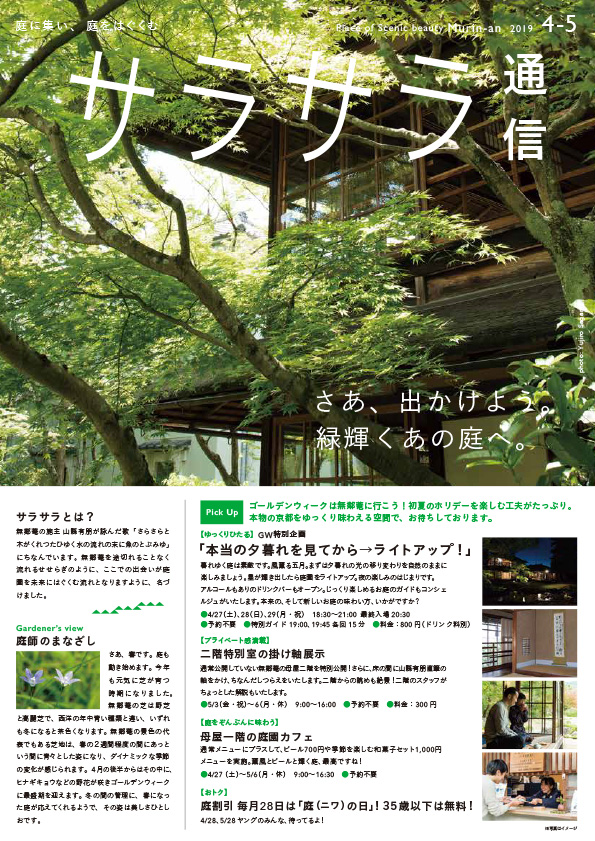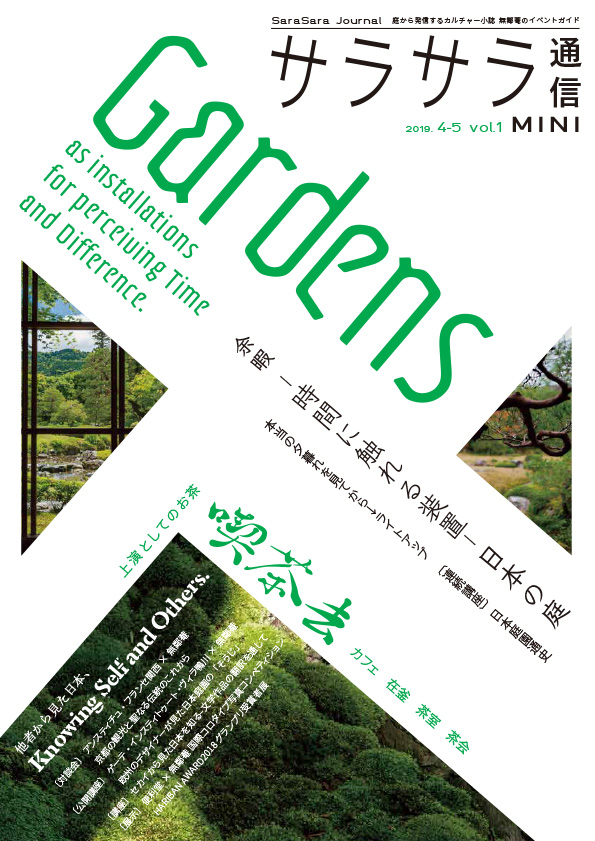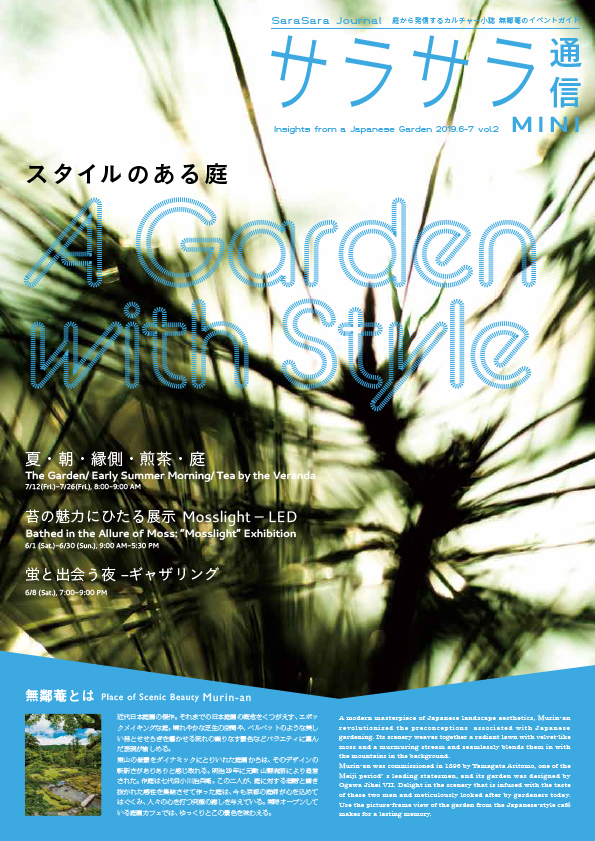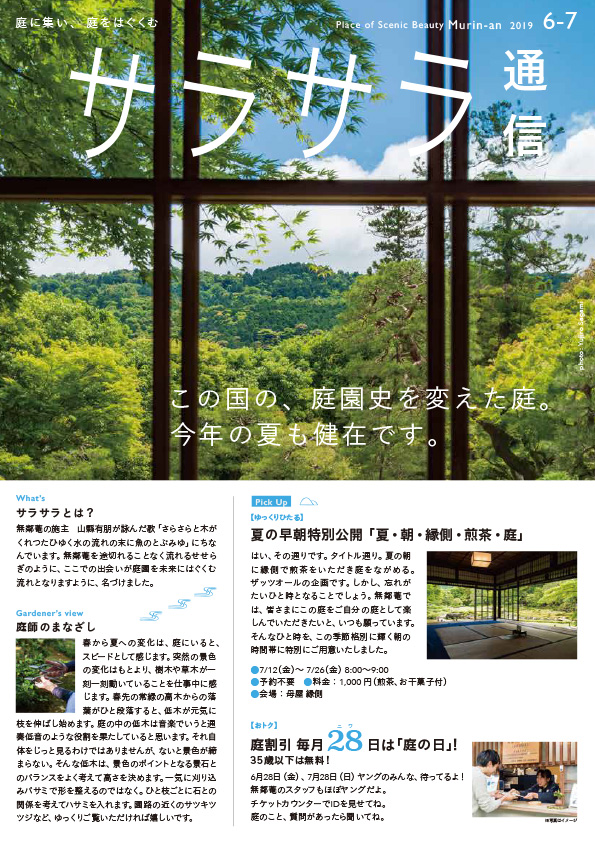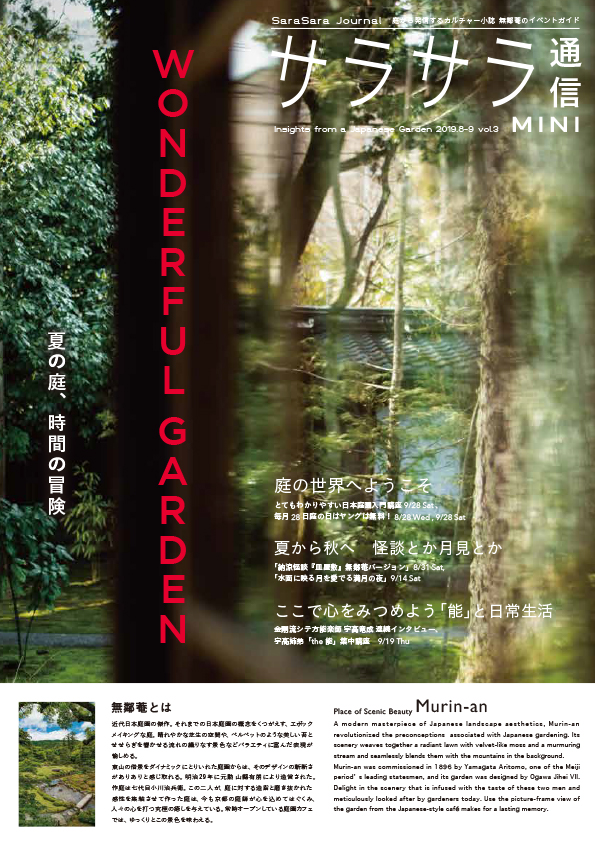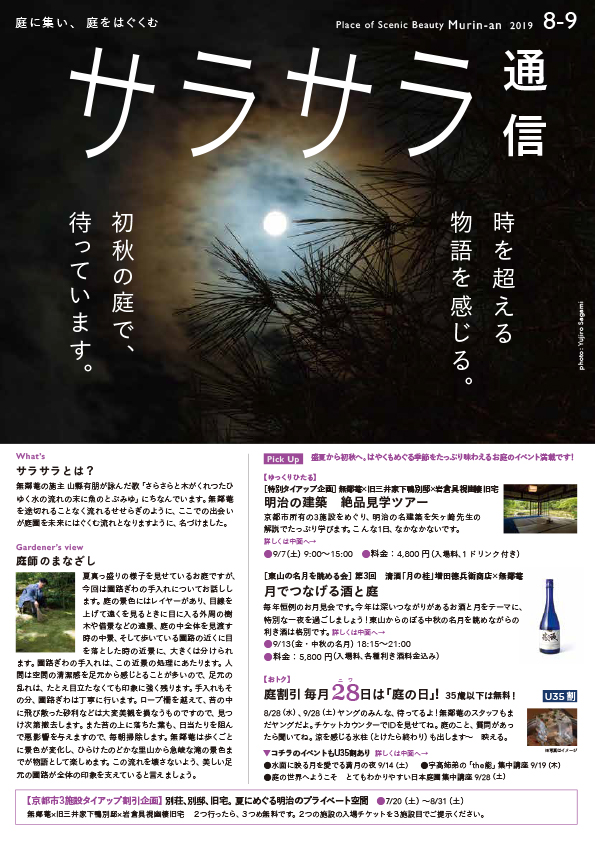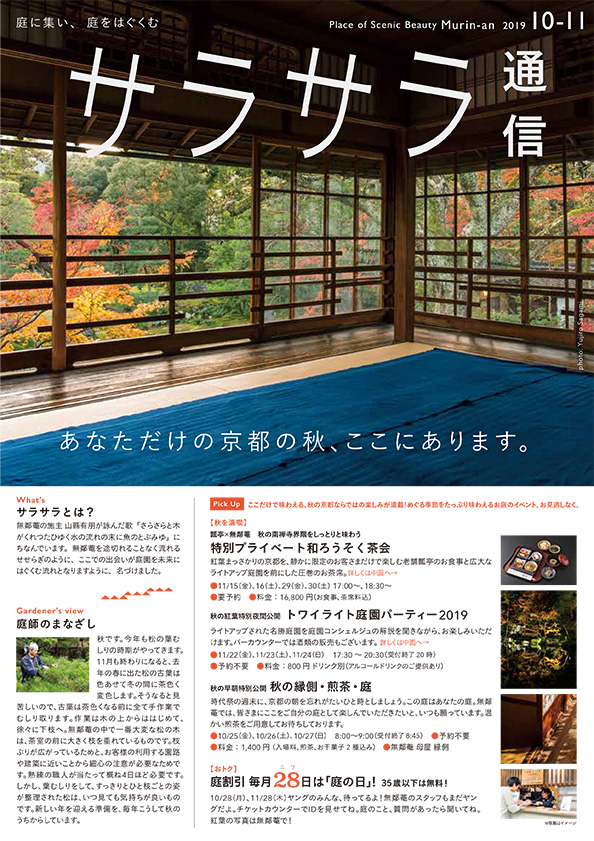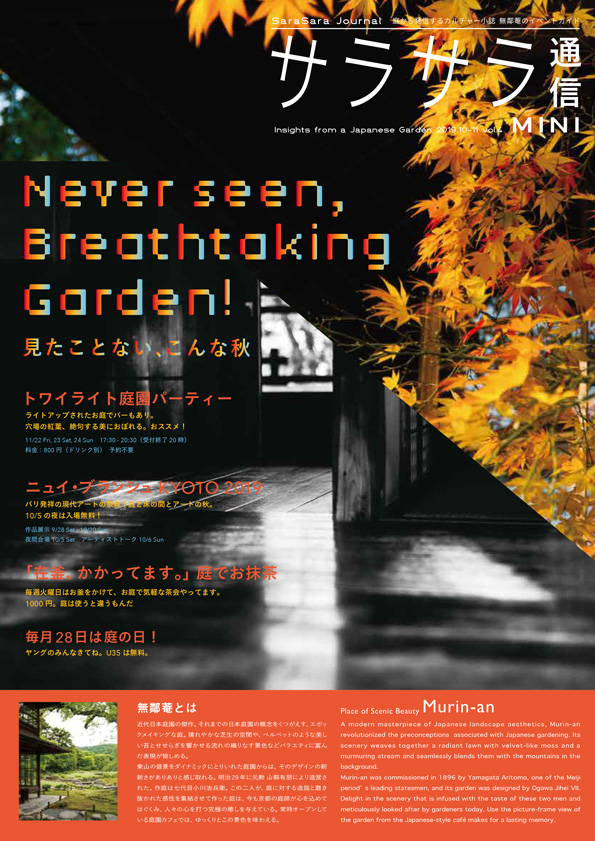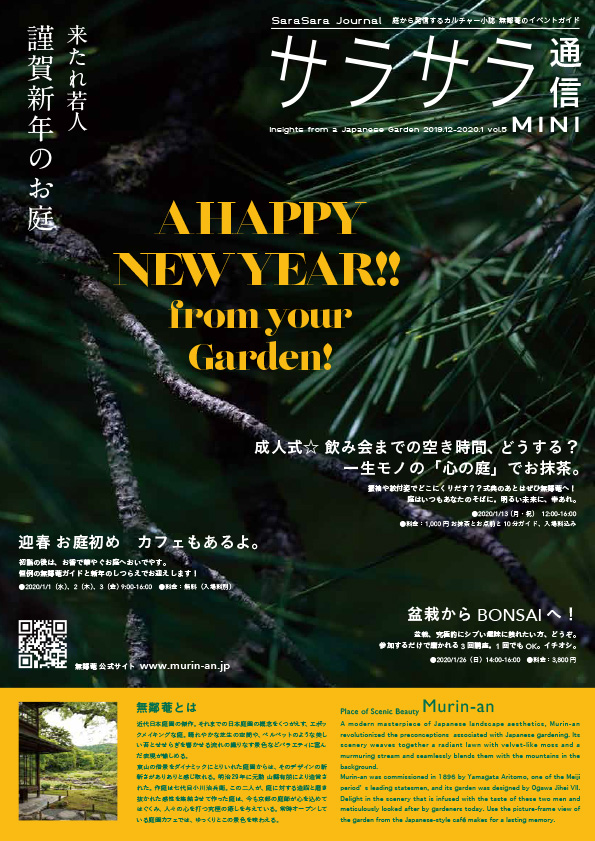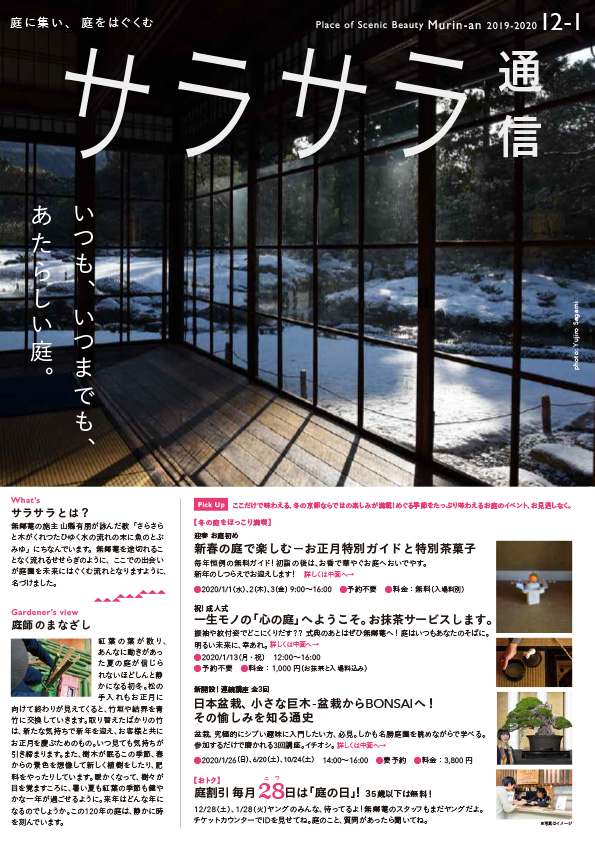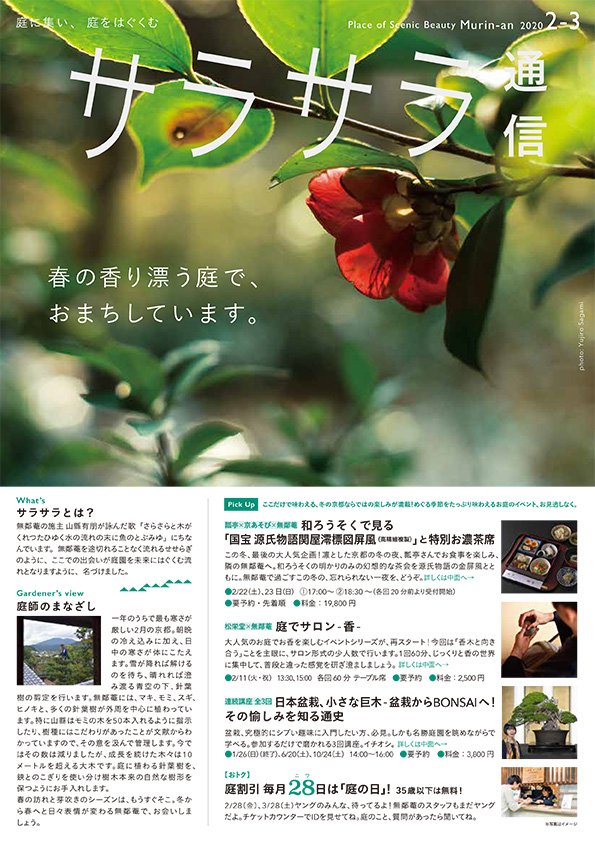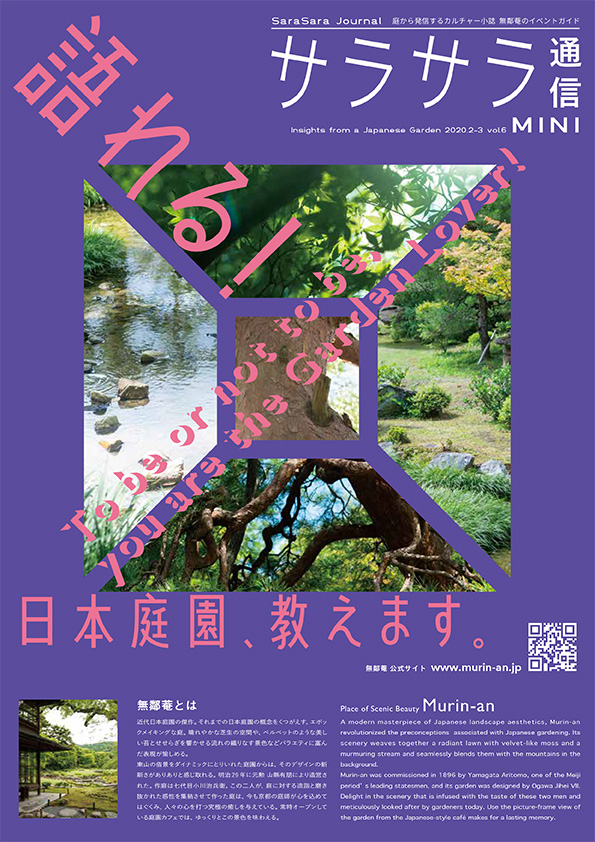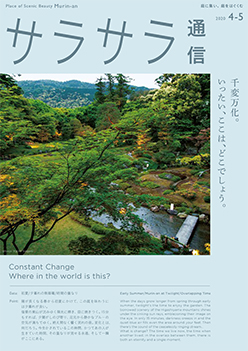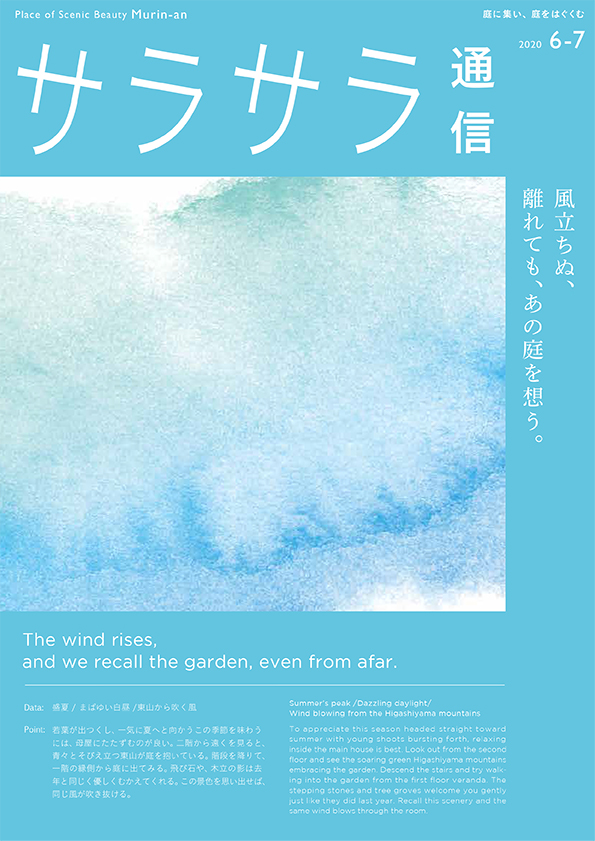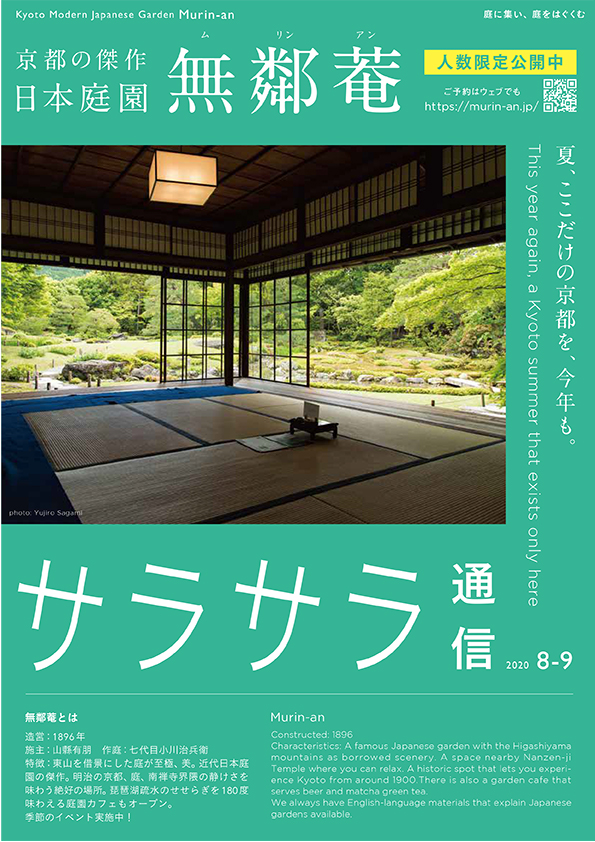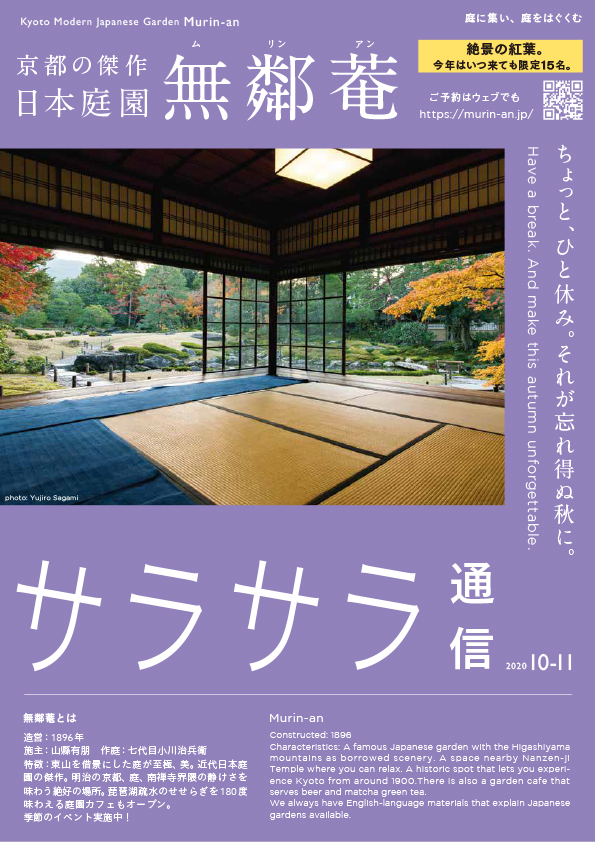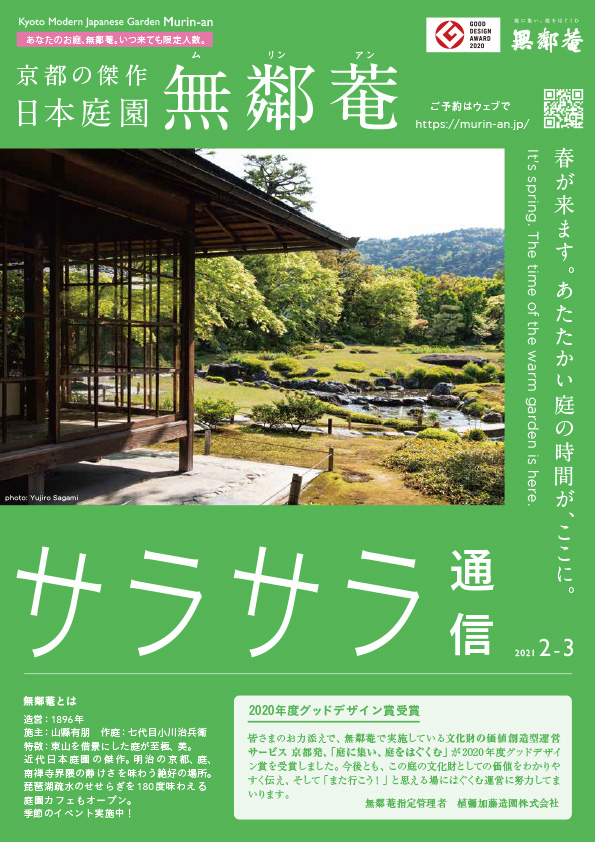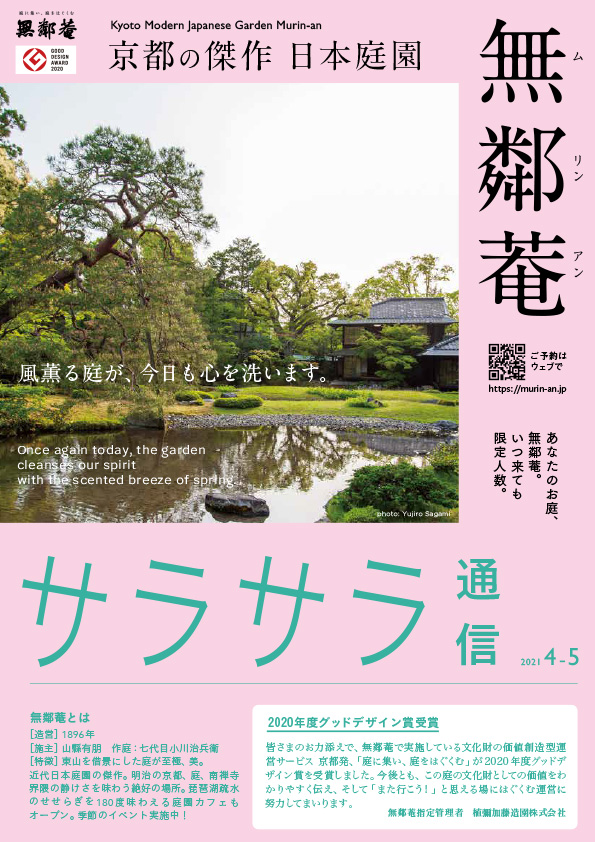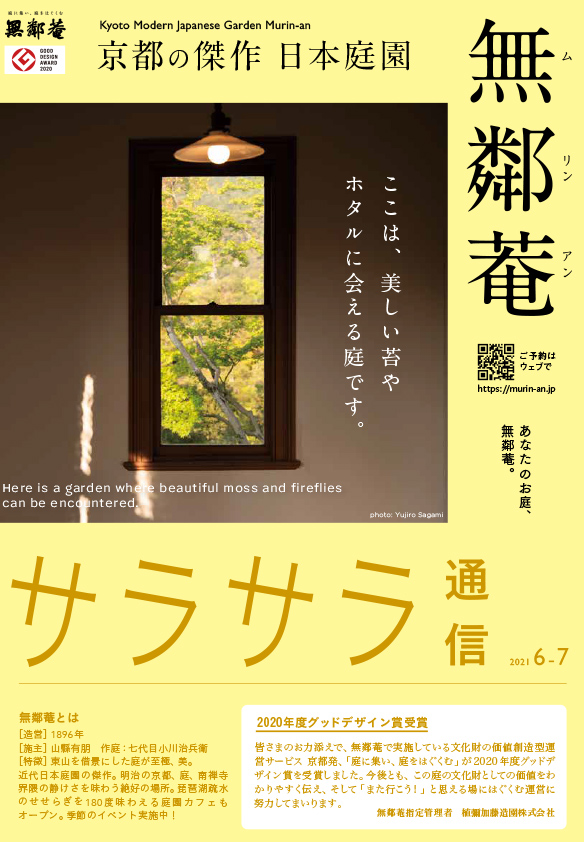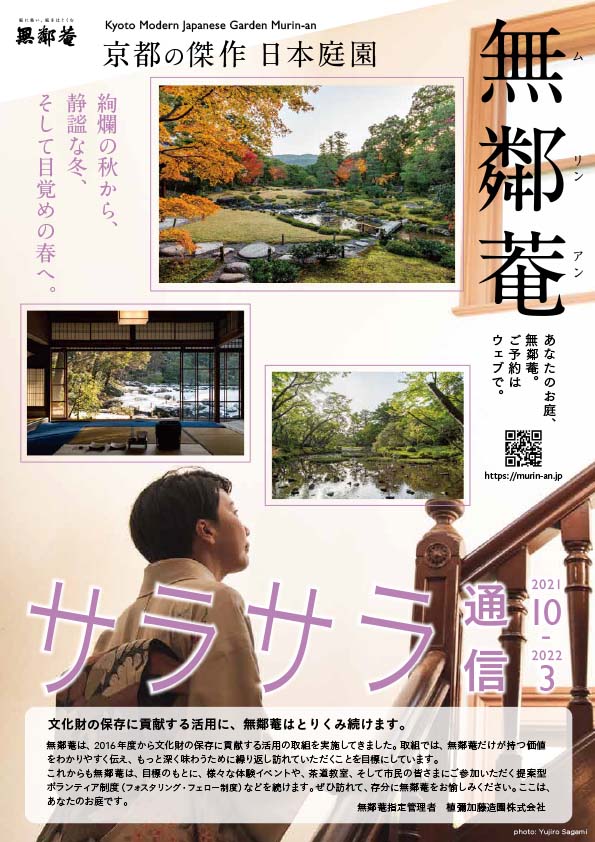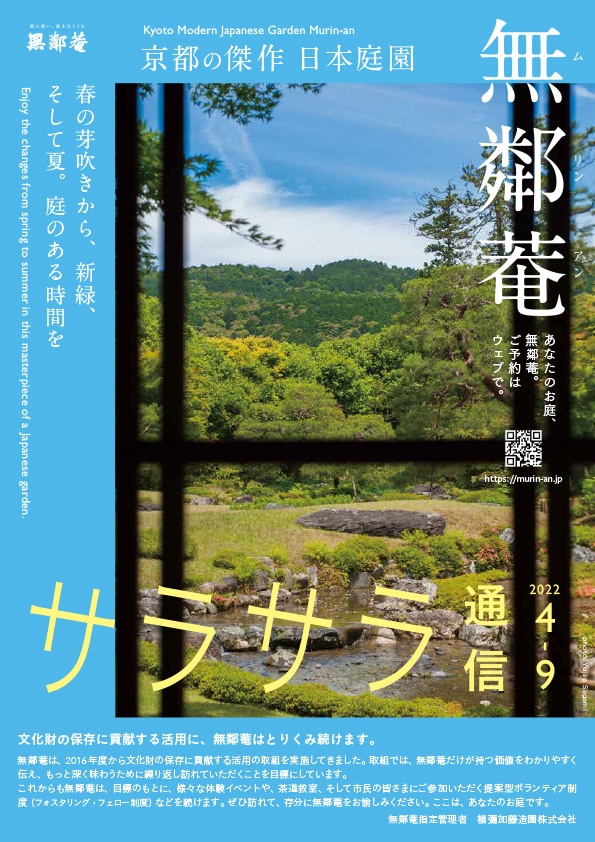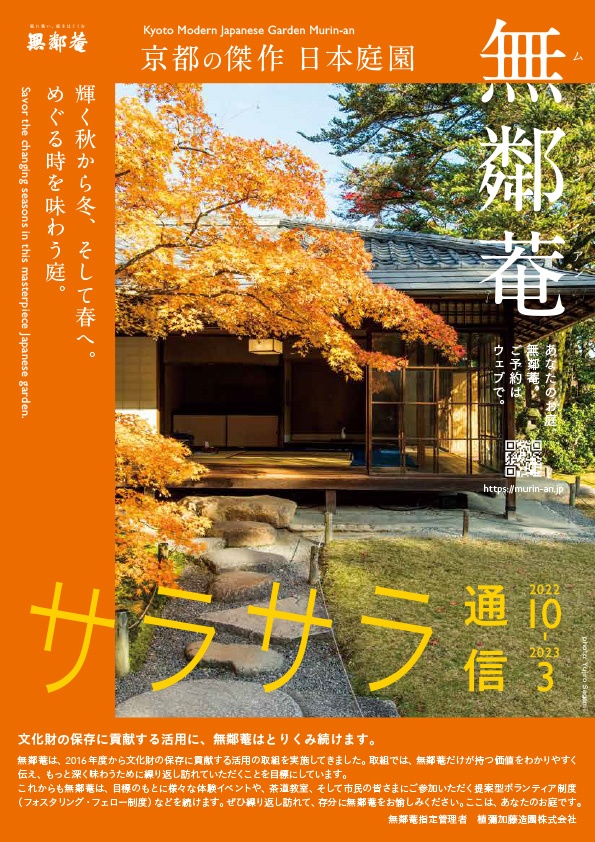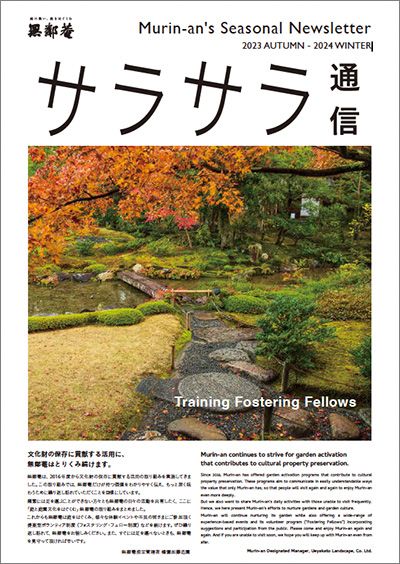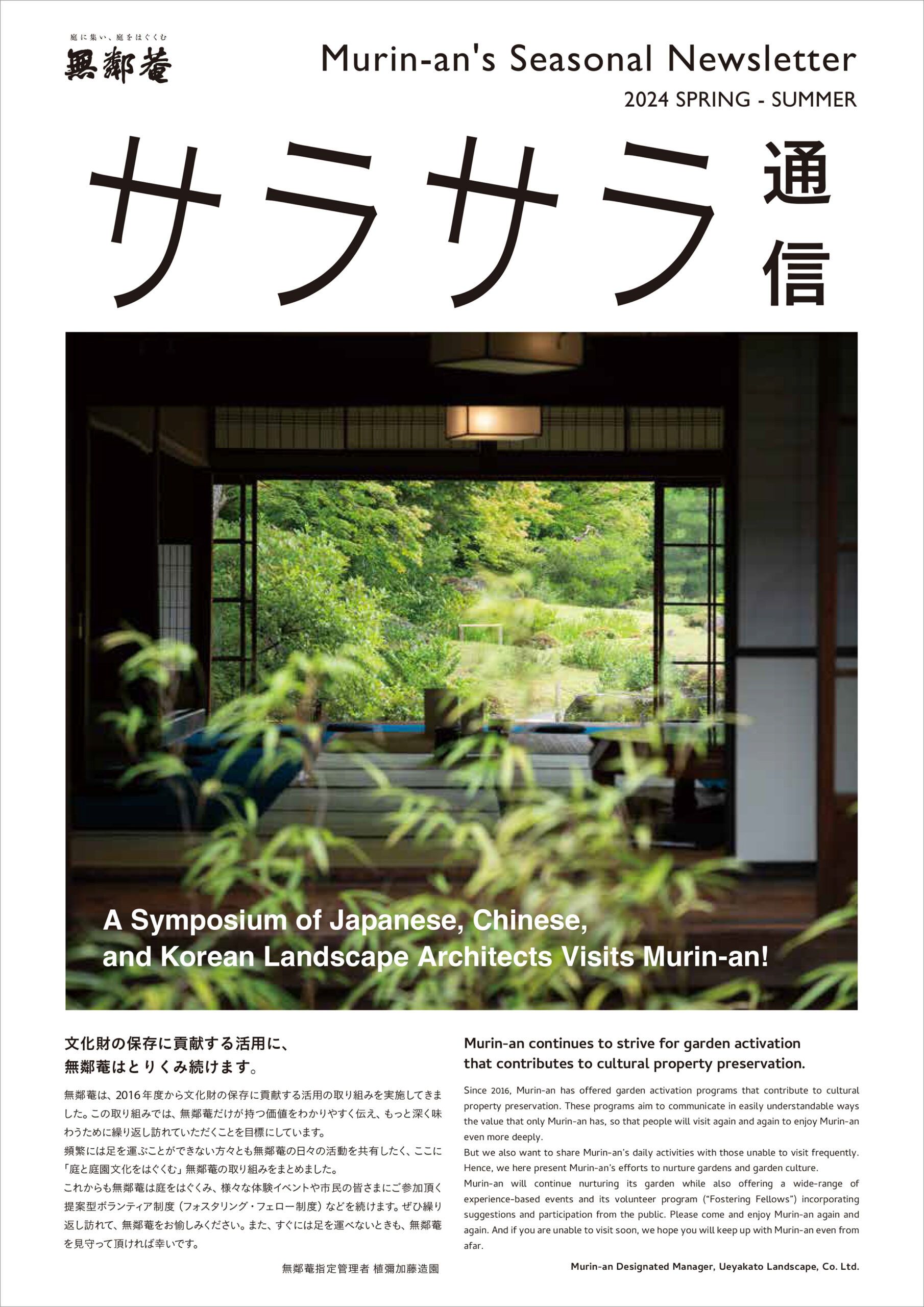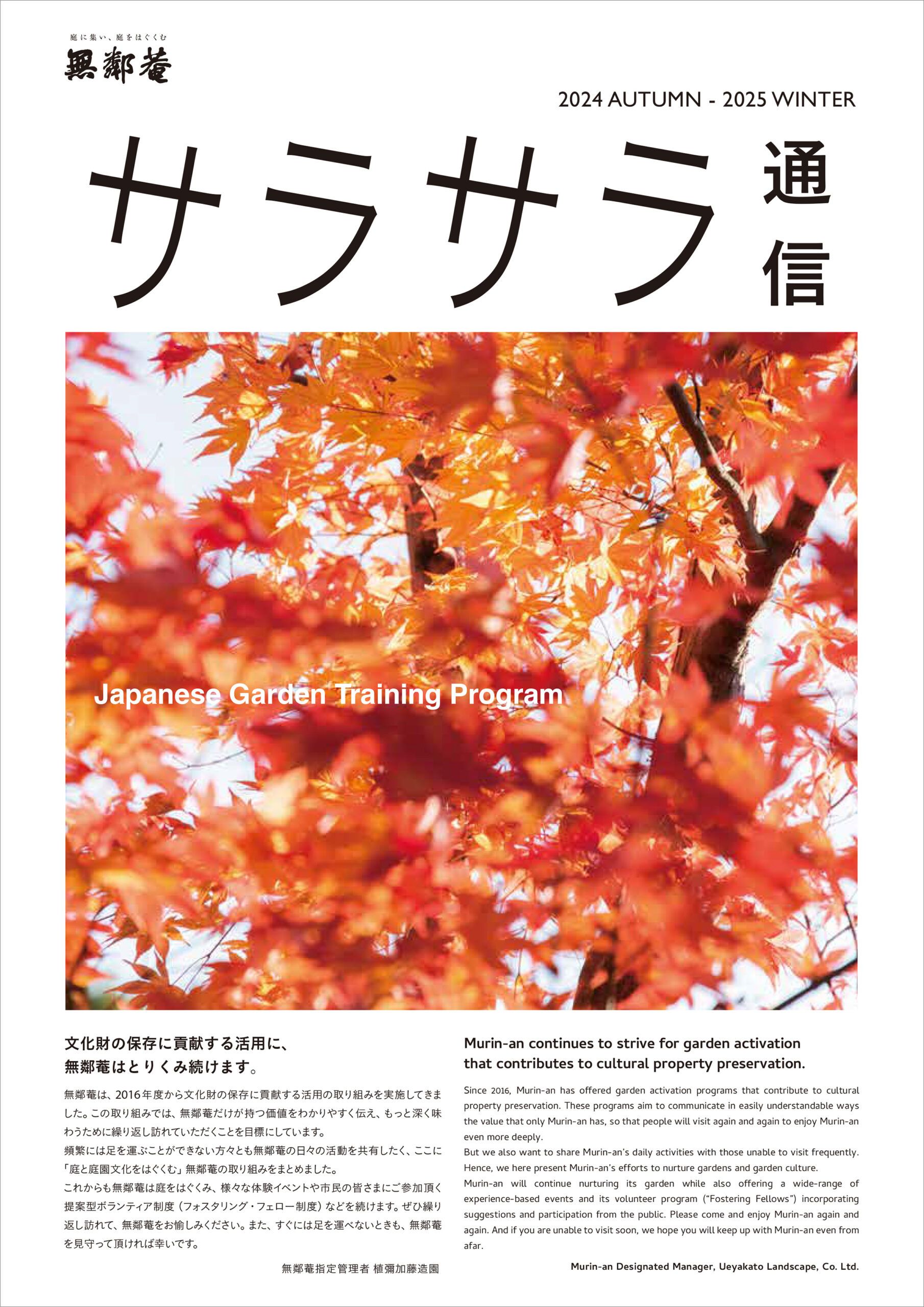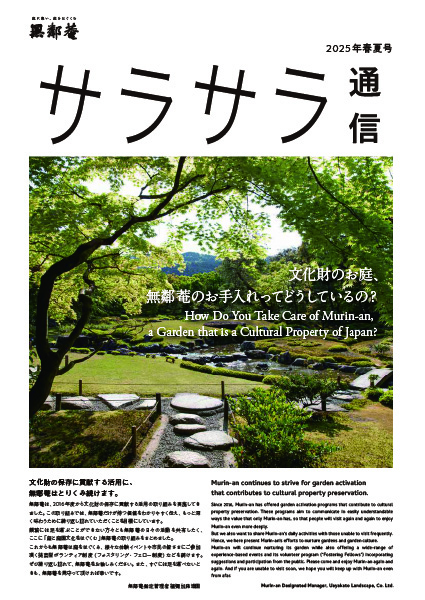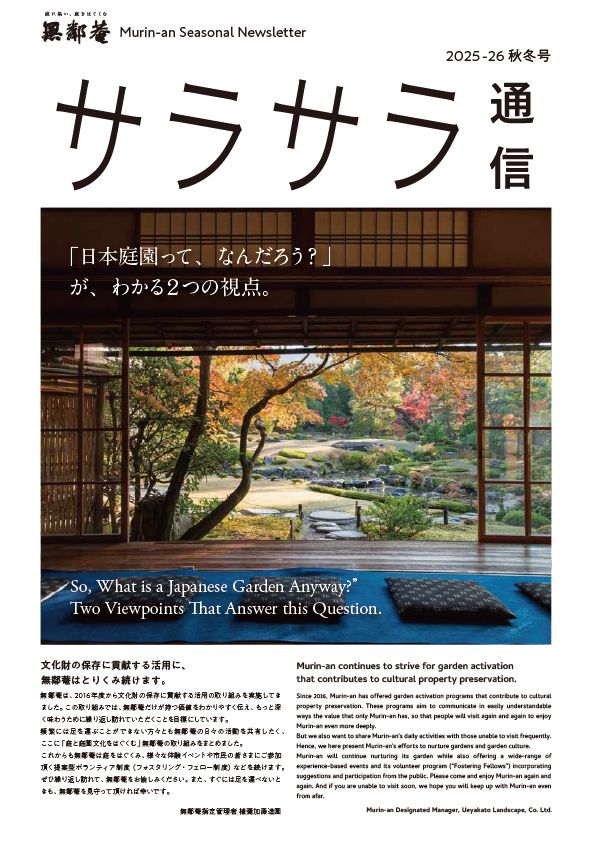Murin-an Periodical
This is the information program of Murin-an Garden.
It provides information on Japanese gardens, invitations to events that help foster the garden and seasonal highlights.
The name of this periodical is Sara-Sara News.
What does “sara-sara” mean? In Japanese, this word is used to evoke a gentle rustle or murmuring sound in nature. We have adopted it from a passage in a poem by Yamagata Aritomo, Murin-an’s original owner. It reads
At the end of a water stream/That murmurs gently as it travels hidden beneath the shade of trees/I see a fish leap
We chose this publication’s title to reflect our hope that, like the ceaseless flow of the murmuring brook flowing around Murin-an, the encounters here will produce a current toward nurturing Japanese gardens for the future.
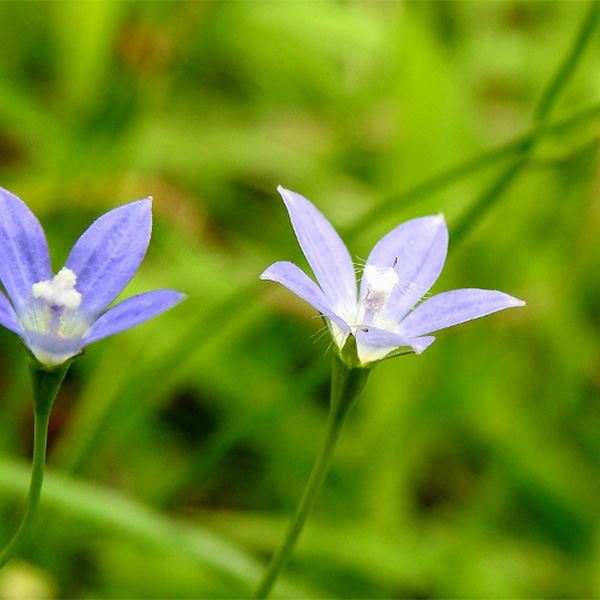
Gardener’s View
And now it’s spring. This is the time when, like so many other things, change in Murin-an’s garden is set in motion. It’s once again that time of year when the lawn vigorously grows in. Murin-an’s lawn is made up of Korean lawn grass (Zoysia tenuifolia) and Japanese lawn grass (Zoysia japonica), both of which, unlike Western-style lawns that stay green all year-round, turn brown in winter. For about two weeks in spring, this lawn, which represents one of the defining features of Murin-an’s scenery, suddenly turns a lush green, thus conveying the dynamic change occurring in the season.
From the latter half of April, Southern Rockbells and other wildflowers bloom amid this lawn, reaching their peak during Japan’s Golden Week holiday.
The lawn’s appearance looks all the more beautiful because we can feel how the garden in spring rewards the care given to it during winter.


